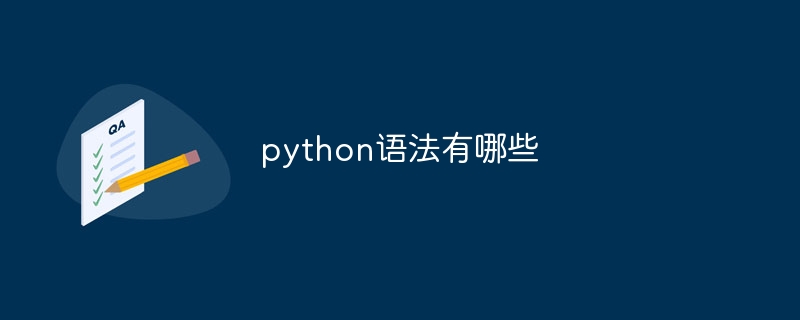
Python syntax features easy-to-read and flexibility. Its key features include: using indentation to organize code blocks; using dynamic typing, which eliminates the need to specify variable data types; based on object-oriented programming, with objects as the core; having Define reserved keywords of language syntax; provide syntax sugar to simplify code writing; follow the duck typing principle and identify objects through behavior; modify function behavior through decorators; use generators to generate values on demand; support multiple assignments; have list derivation functions, concise Create a list locally.

Key features of Python syntax
Python is a high-level programming language known for its ease of reading and writing and flexibility. Its syntax has the following key features:
1. Indentation
Python uses indentation to organize blocks of code. Use 4 spaces for indentation instead of braces or semicolons. This makes Python code easy to read and understand.
2. Dynamic typing
Python is a dynamically typed language, which means variables do not need to specify their data type. The data type of the variable is determined automatically at runtime.
3. Objects
Python is an object-oriented programming language, which means it is based on the concept of objects. An object is a data structure that contains data and functions that operate on the data.
4. Keywords
Python has many reserved keywords that are used to define the syntax of the language. They cannot be used as variable or function names.
5. Syntactic sugar
There are many syntactic sugars in Python that simplify the writing of code. For example, list comprehensions allow looping and list creation to be combined into one line.
6. Duck Typing
Python follows the principle of duck typing, which means that an object is not identified by its class, but by its behavior. Any object with a specific method can be used as that method type.
7. Decorators
Decorators in Python are a syntax feature that allows you to modify the behavior of a function without modifying the source code. They are often used to add extra functionality or metadata.
8. Generators
A generator in Python is a special type of iterator that generates values when needed, rather than generating the entire sequence at once. This saves memory and improves efficiency.
9. Multiple assignment
Python allows multiple assignment, which allows multiple values to be assigned to multiple variables at the same time. For example, x, y = 1, 2 assigns 1 to x and 2 to y.
10. List comprehension
List comprehension is a concise way to create a list. It allows applying an expression to each element in a sequence and storing the resulting value in a list.
The above is the detailed content of What are the python syntaxes?. For more information, please follow other related articles on the PHP Chinese website!




